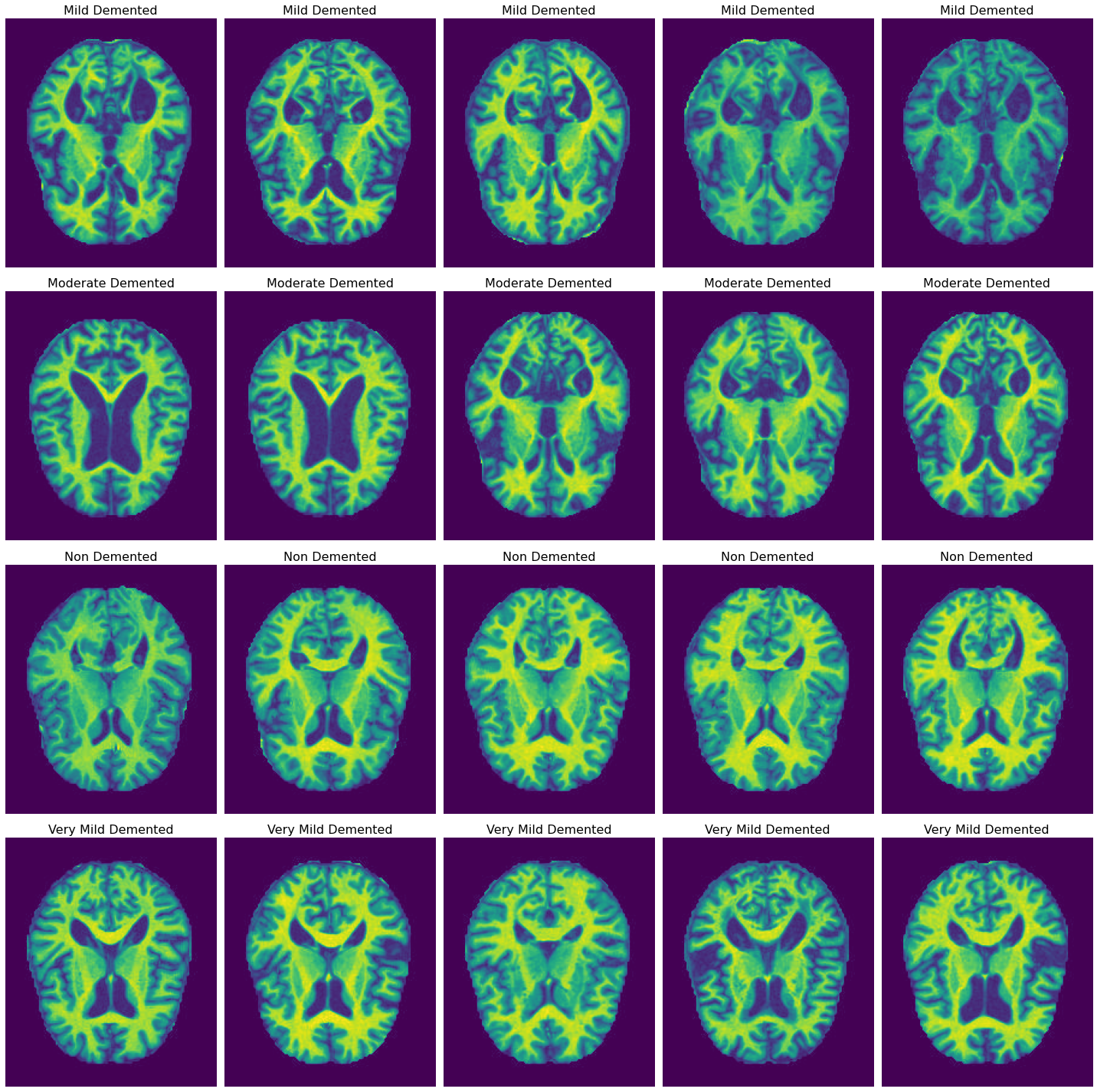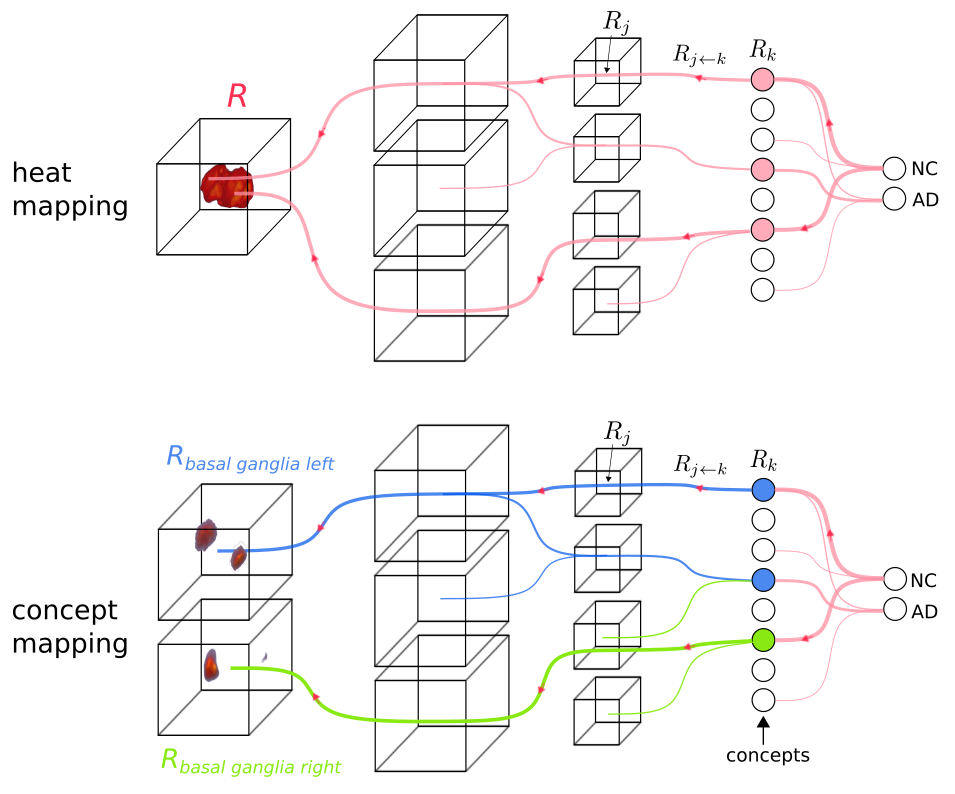A Quantitative Approach for Evaluating Disease Focus and Interpretability of Deep Learning Models for Alzheimer's Disease Classification

0

Sign in to get full access
Overview
- This paper presents a quantitative approach for evaluating the disease focus and interpretability of deep learning models for Alzheimer's disease classification.
- The research is supported by an NIH grant R01GM140467.
- The study uses MRI data and CNN models to classify Alzheimer's disease.
- The key objectives are to assess the disease focus and interpretability of the deep learning models.
Plain English Explanation
Alzheimer's disease is a serious condition that affects memory and cognitive function. Researchers are using advanced deep learning techniques, like convolutional neural networks (CNNs), to try to improve the diagnosis and understanding of Alzheimer's from medical imaging data, such as MRI scans.
This paper describes a new method for quantitatively evaluating how well these deep learning models are able to focus on the parts of the brain that are most relevant to Alzheimer's disease, and how interpretable or explainable the models' decision-making processes are. The researchers used a combination of brain segmentation techniques and visualization methods to better understand what the deep learning models were actually learning from the MRI data.
The key benefit of this approach is that it can help researchers develop more reliable and trustworthy AI systems for Alzheimer's diagnosis and monitoring, by ensuring the models are truly focusing on the right brain regions and providing meaningful insights, rather than just finding spurious correlations in the data.
Technical Explanation
The paper proposes a quantitative approach for evaluating disease focus and interpretability of deep learning models for Alzheimer's disease classification. The researchers trained CNN models to classify Alzheimer's disease using MRI data, and then developed techniques to assess two important aspects of the models:
-
Disease Focus: The researchers used brain segmentation to quantify how much the models were focusing on brain regions known to be affected by Alzheimer's, versus other irrelevant regions. This helps ensure the models are learning meaningful representations.
-
Interpretability: The researchers applied saliency map visualization methods to understand which parts of the MRI scans were most influential in the models' decision-making. This provides insights into the "reasoning" of the deep learning systems.
The results showed that the proposed evaluation approach could effectively identify models that were overly focused on non-disease-relevant regions or had poor interpretability. This allows researchers to iteratively improve the deep learning models to be more reliable and explainable for Alzheimer's diagnosis.
Critical Analysis
The paper presents a well-designed and thorough approach for quantitatively evaluating deep learning models for Alzheimer's disease classification. The use of brain segmentation and saliency mapping techniques is a clever way to go beyond just measuring model accuracy, and instead inspect the models' internal decision-making processes.
However, the paper does not address some potential limitations of the approach. For example, the reliance on pre-defined brain regions of interest may miss more subtle or diffuse patterns that the models have learned. Additionally, saliency mapping has known issues with being dependent on model architecture and potentially missing important contextual information.
Further research could explore other interpretability techniques, such as concept activation vectors or layer-wise relevance propagation, to provide a more comprehensive view of model behavior. Validation on larger and more diverse datasets would also strengthen the conclusions.
Overall, this work represents an important step towards developing more trustworthy and explicable AI systems for Alzheimer's disease diagnosis and management. The quantitative evaluation framework can help ensure deep learning models are truly focusing on the right neurological biomarkers, rather than exploiting confounding factors in the data.
Conclusion
This paper presents a novel quantitative approach for evaluating the disease focus and interpretability of deep learning models used for Alzheimer's disease classification from MRI data. By combining brain segmentation and saliency mapping techniques, the researchers were able to assess whether the models were learning representations that were truly relevant to the underlying neurological changes associated with Alzheimer's.
The proposed evaluation framework can help AI researchers and developers build more reliable and explainable systems for Alzheimer's diagnosis and monitoring. This is crucial, as these technologies will increasingly be relied upon to support clinical decision-making. Ensuring the models focus on the right disease-specific biomarkers and provide interpretable insights will be key to building trust and adoption in the medical community.
Further advancements in interpretability methods and validation on larger datasets could strengthen this line of research and accelerate the translation of deep learning for Alzheimer's care. Overall, this work represents an important step towards more trustworthy and clinically-relevant AI solutions in the field of neurodegenerative disease.
This summary was produced with help from an AI and may contain inaccuracies - check out the links to read the original source documents!
Related Papers


0
A Quantitative Approach for Evaluating Disease Focus and Interpretability of Deep Learning Models for Alzheimer's Disease Classification
Thomas Yu Chow Tam, Litian Liang, Ke Chen, Haohan Wang, Wei Wu
Deep learning (DL) models have shown significant potential in Alzheimer's Disease (AD) classification. However, understanding and interpreting these models remains challenging, which hinders the adoption of these models in clinical practice. Techniques such as saliency maps have been proven effective in providing visual and empirical clues about how these models work, but there still remains a gap in understanding which specific brain regions DL models focus on and whether these brain regions are pathologically associated with AD. To bridge such gap, in this study, we developed a quantitative disease-focusing strategy to first enhance the interpretability of DL models using saliency maps and brain segmentations; then we propose a disease-focus (DF) score that quantifies how much a DL model focuses on brain areas relevant to AD pathology based on clinically known MRI-based pathological regions of AD. Using this strategy, we compared several state-of-the-art DL models, including a baseline 3D ResNet model, a pretrained MedicalNet model, and a MedicalNet with data augmentation to classify patients with AD vs. cognitive normal patients using MRI data; then we evaluated these models in terms of their abilities to focus on disease-relevant regions. Our results show interesting disease-focusing patterns with different models, particularly characteristic patterns with the pretrained models and data augmentation, and also provide insight into their classification performance. These results suggest that the approach we developed for quantitatively assessing the abilities of DL models to focus on disease-relevant regions may help improve interpretability of these models for AD classification and facilitate their adoption for AD diagnosis in clinical practice. The code is publicly available at https://github.com/Liang-lt/ADNI.
Read more9/10/2024


0
Quantitative Evaluation of the Saliency Map for Alzheimer's Disease Classifier with Anatomical Segmentation
Yihan Zhang, Xuanshuo Zhang, Wei Wu, Haohan Wang
Saliency maps have been widely used to interpret deep learning classifiers for Alzheimer's disease (AD). However, since AD is heterogeneous and has multiple subtypes, the pathological mechanism of AD remains not fully understood and may vary from patient to patient. Due to the lack of such understanding, it is difficult to comprehensively and effectively assess the saliency map of AD classifier. In this paper, we utilize the anatomical segmentation to allocate saliency values into different brain regions. By plotting the distributions of saliency maps corresponding to AD and NC (Normal Control), we can gain a comprehensive view of the model's decisions process. In order to leverage the fact that the brain volume shrinkage happens in AD patients during disease progression, we define a new evaluation metric, brain volume change score (VCS), by computing the average Pearson correlation of the brain volume changes and the saliency values of a model in different brain regions for each patient. Thus, the VCS metric can help us gain some knowledge of how saliency maps resulting from different models relate to the changes of the volumes across different regions in the whole brain. We trained candidate models on the ADNI dataset and tested on three different datasets. Our results indicate: (i) models with higher VCSs tend to demonstrate saliency maps with more details relevant to the AD pathology, (ii) using gradient-based adversarial training strategies such as FGSM and stochastic masking can improve the VCSs of the models.
Read more7/12/2024


0
A Dual-Attention Aware Deep Convolutional Neural Network for Early Alzheimer's Detection
Pandiyaraju V, Shravan Venkatraman, Abeshek A, Aravintakshan S A, Pavan Kumar S, Kannan A
Alzheimer's disease (AD) represents the primary form of neurodegeneration, impacting millions of individuals each year and causing progressive cognitive decline. Accurately diagnosing and classifying AD using neuroimaging data presents ongoing challenges in medicine, necessitating advanced interventions that will enhance treatment measures. In this research, we introduce a dual attention enhanced deep learning (DL) framework for classifying AD from neuroimaging data. Combined spatial and self-attention mechanisms play a vital role in emphasizing focus on neurofibrillary tangles and amyloid plaques from the MRI images, which are difficult to discern with regular imaging techniques. Results demonstrate that our model yielded remarkable performance in comparison to existing state of the art (SOTA) convolutional neural networks (CNNs), with an accuracy of 99.1%. Moreover, it recorded remarkable metrics, with an F1-Score of 99.31%, a precision of 99.24%, and a recall of 99.5%. These results highlight the promise of cutting edge DL methods in medical diagnostics, contributing to highly reliable and more efficient healthcare solutions.
Read more7/16/2024


0
Explainable concept mappings of MRI: Revealing the mechanisms underlying deep learning-based brain disease classification
Christian Tinauer, Anna Damulina, Maximilian Sackl, Martin Soellradl, Reduan Achtibat, Maximilian Dreyer, Frederik Pahde, Sebastian Lapuschkin, Reinhold Schmidt, Stefan Ropele, Wojciech Samek, Christian Langkammer
Motivation. While recent studies show high accuracy in the classification of Alzheimer's disease using deep neural networks, the underlying learned concepts have not been investigated. Goals. To systematically identify changes in brain regions through concepts learned by the deep neural network for model validation. Approach. Using quantitative R2* maps we separated Alzheimer's patients (n=117) from normal controls (n=219) by using a convolutional neural network and systematically investigated the learned concepts using Concept Relevance Propagation and compared these results to a conventional region of interest-based analysis. Results. In line with established histological findings and the region of interest-based analyses, highly relevant concepts were primarily found in and adjacent to the basal ganglia. Impact. The identification of concepts learned by deep neural networks for disease classification enables validation of the models and could potentially improve reliability.
Read more4/17/2024